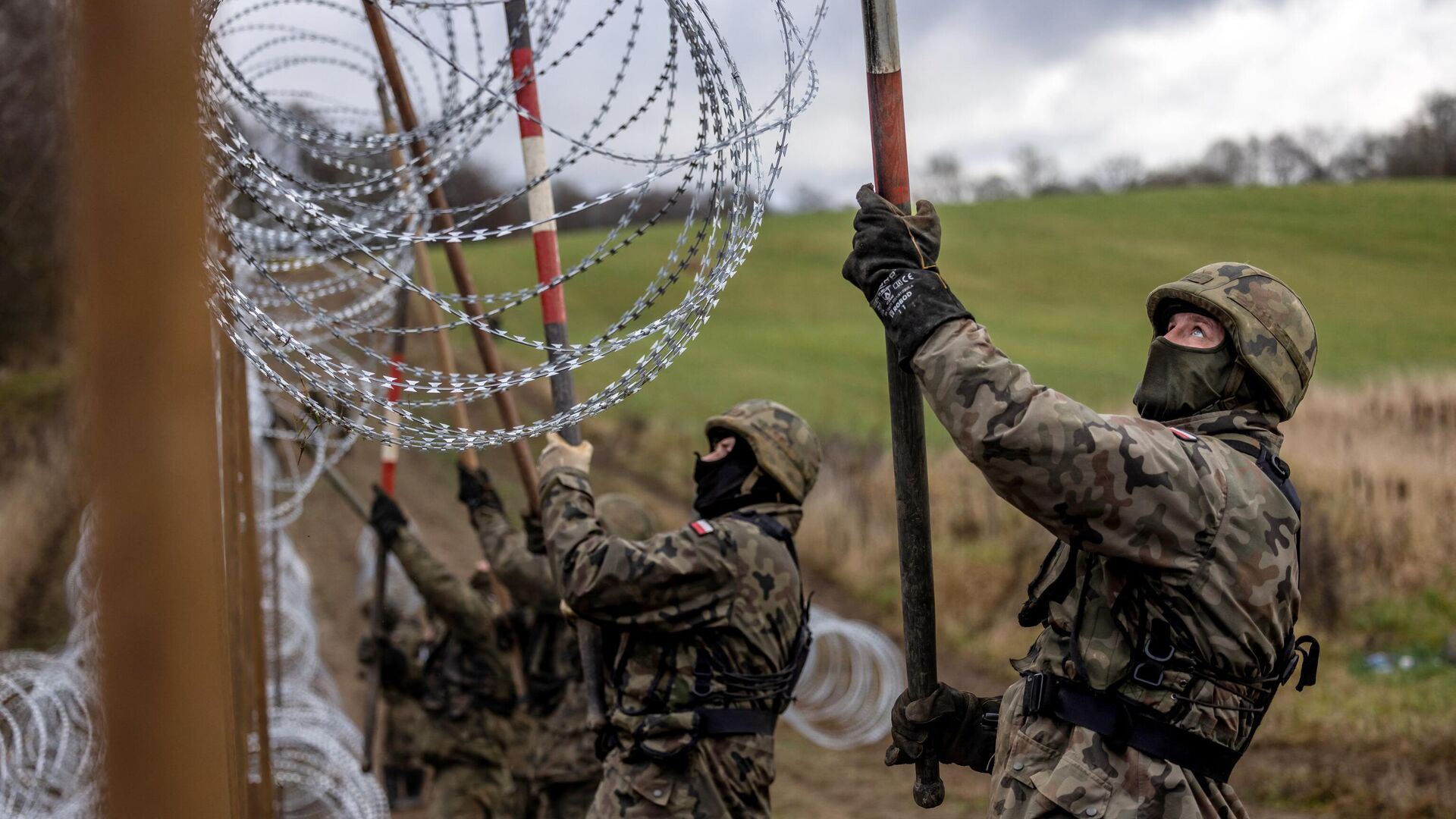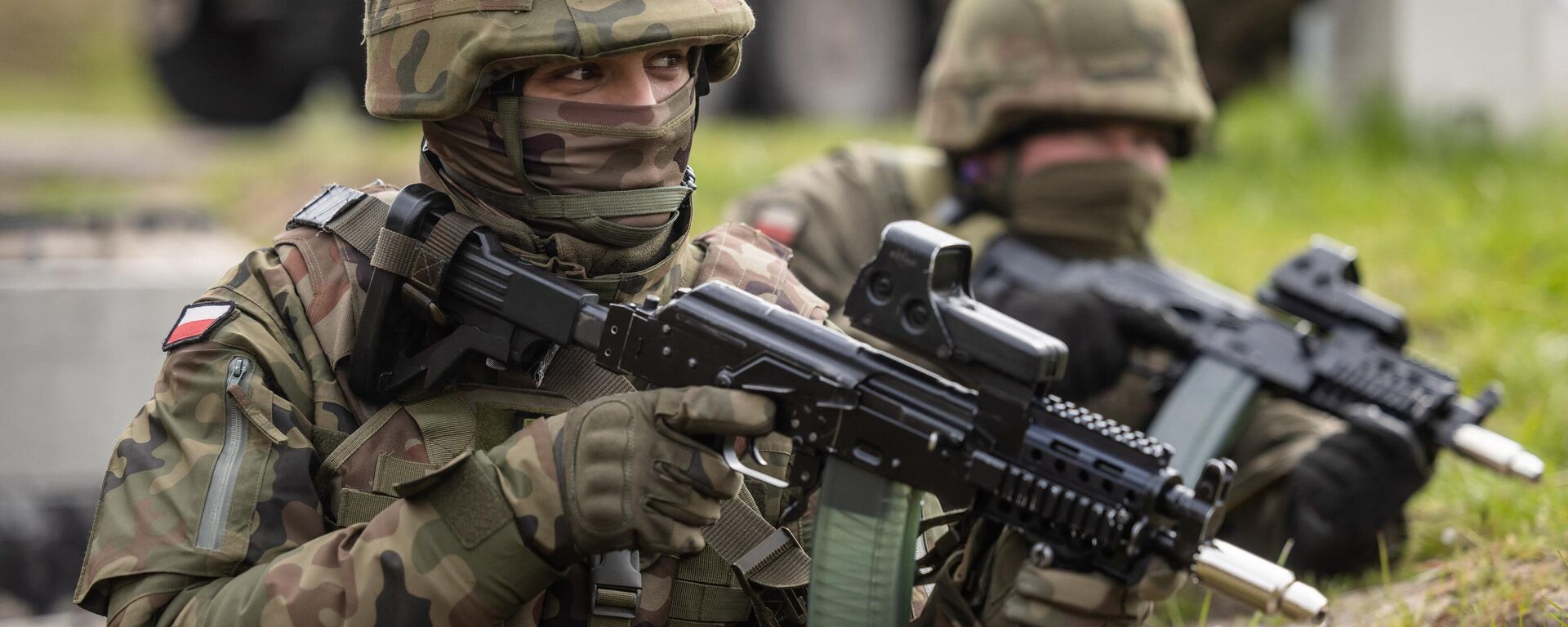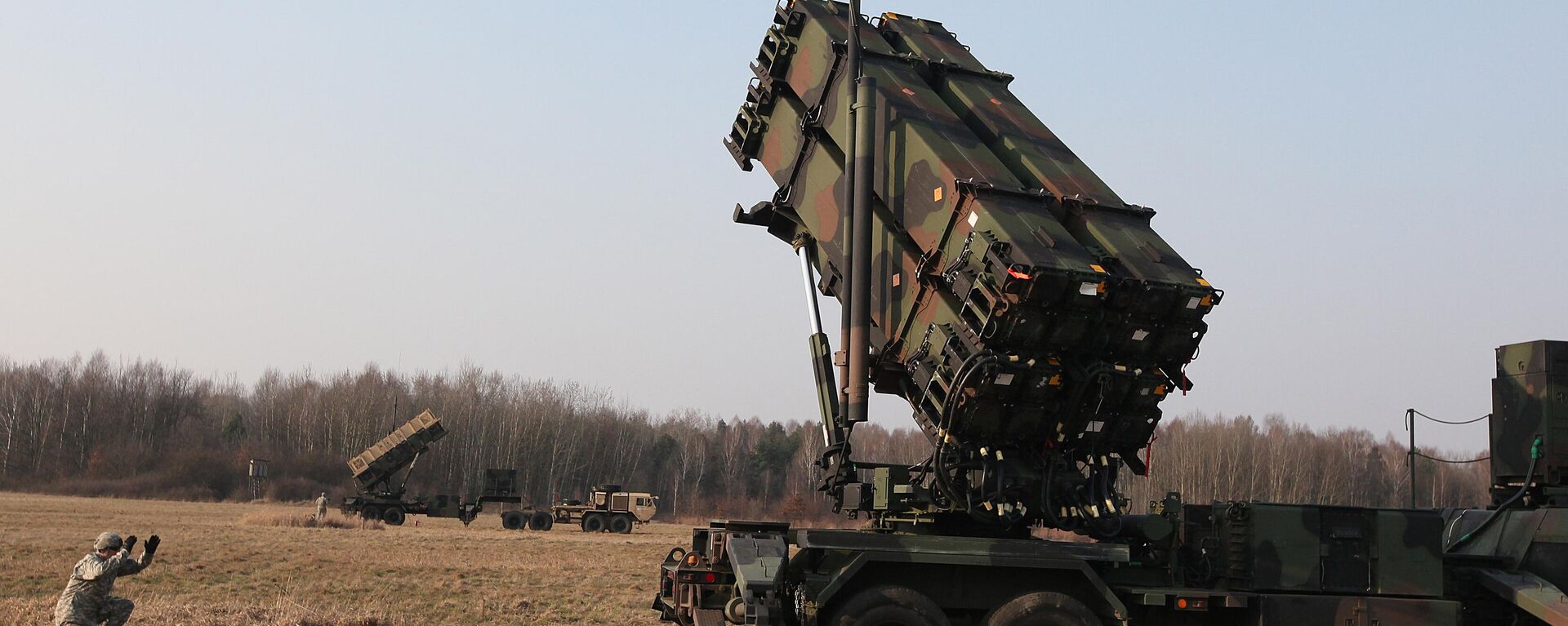Poland, Baltics Join Forces to Build Maginot-Style Defensive Line on Border With Russia, Belarus

© AFP 2023 / WOJTEK RADWANSKI
Subscribe
Poland and the Baltic states' entry into NATO in the late 1990s and early 2000s resulted in NATO forces directly on Russia's borders - in violation of commitments made by the US not to expand the alliance beyond a reunified Germany. Throughout the Ukrainian crisis, Poland and the Baltics have been at the forefront of anti-Russian hysteria.
Polish Deputy Defense Minister Cezary Tomczyk has announced plans to join forces with Lithuania, Latvia and Estonia to build a unified Baltic defense line on the borders with Russia and Belarus.
"This is very important to us," Tomczyk said, speaking at a meeting with defense ministers of northern European countries on Thursday.
The initiative, dubbed ‘Baltic Shield’, comes on the heels of plans by Warsaw announced last week to spend 10 billion zlotys (about $2.5 billion) to create an ‘environmentally friendly’ network of forts, roadblocks, flood zones, anti-tank ditches and firing positions near the borders with Russia’s Kaliningrad and Belarus known as ‘Shield East’. The two projects will be combined.
Poland’s frontier defenses are expected to take “several years” to create, and add to the 187 km-long $400 million wall Poland erected on the border with Belarus in 2021 to curb illegal immigration.
Details on the expanded ‘Baltic Shield’ defenses are scarce, but Latvian Defense Minister Laurynas Kasciunas said this week that his country’s defenses will include anti-tank hedgehogs, reinforced concrete forts, and dragon’s teeth. Estonia is known to have plans to build some 600 small bunkers.
Warsaw should expect legal problems with ‘Shield East’ – including environmental concerns from local governments and administrators of protected areas like Bialowieza National Park – whose wildlife has already suffered thanks to the border wall put up in 2021. The ‘Shield’ is also likely to result in the forcible expropriation of privately owned lands. In the past, such expropriations have been criticized for low payouts.
Militarily, there are an array of problems with the project. While Moscow has stated repeatedly that it has absolutely no plans to attack NATO countries, in a purely hypothetical scenario of a conflict in the Baltic region, the experience Russia has amassed in smashing fortified defensive lines that Ukraine’s armies set up in the Donbass show that a combination of FAB-series bombs, artillery, drones, and pinpoint missile strikes can crack fortifications – no matter how strong.
The timing of the Baltic Shield initiative is also interesting, asking Polish and Baltic taxpayers to shell out additional billions for defense as their countries flirt with recessions, inflation and spiking energy costs.



